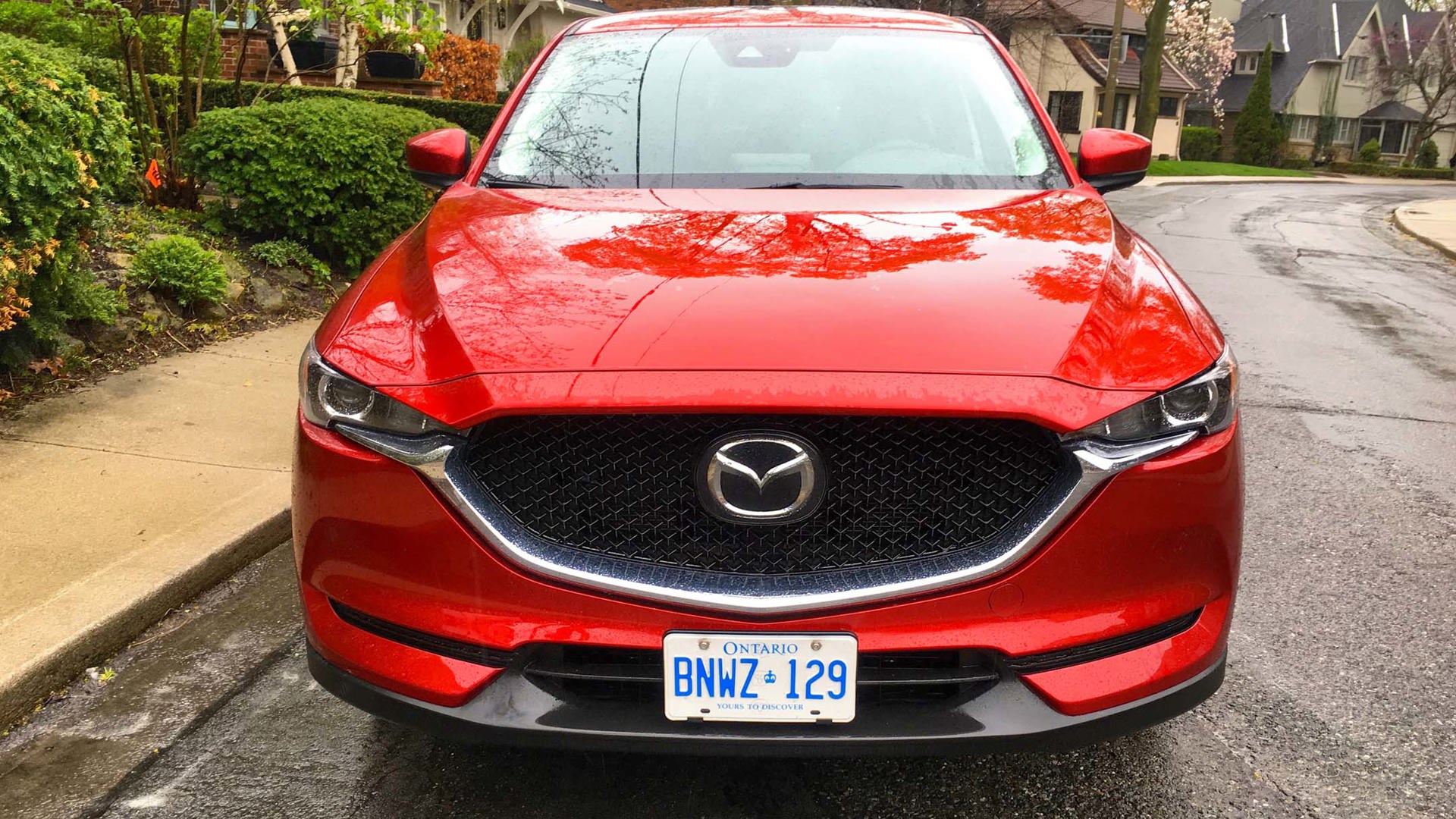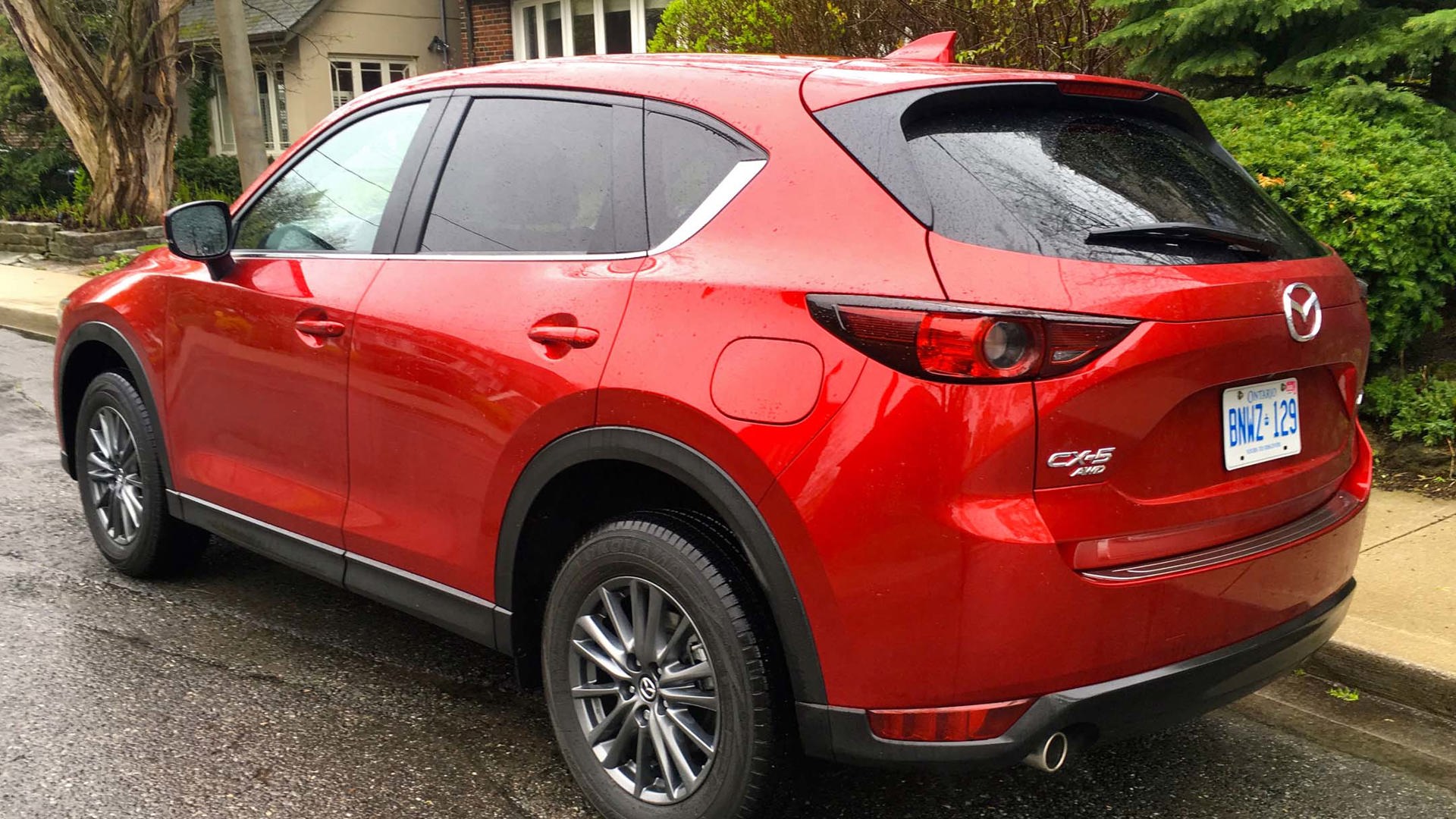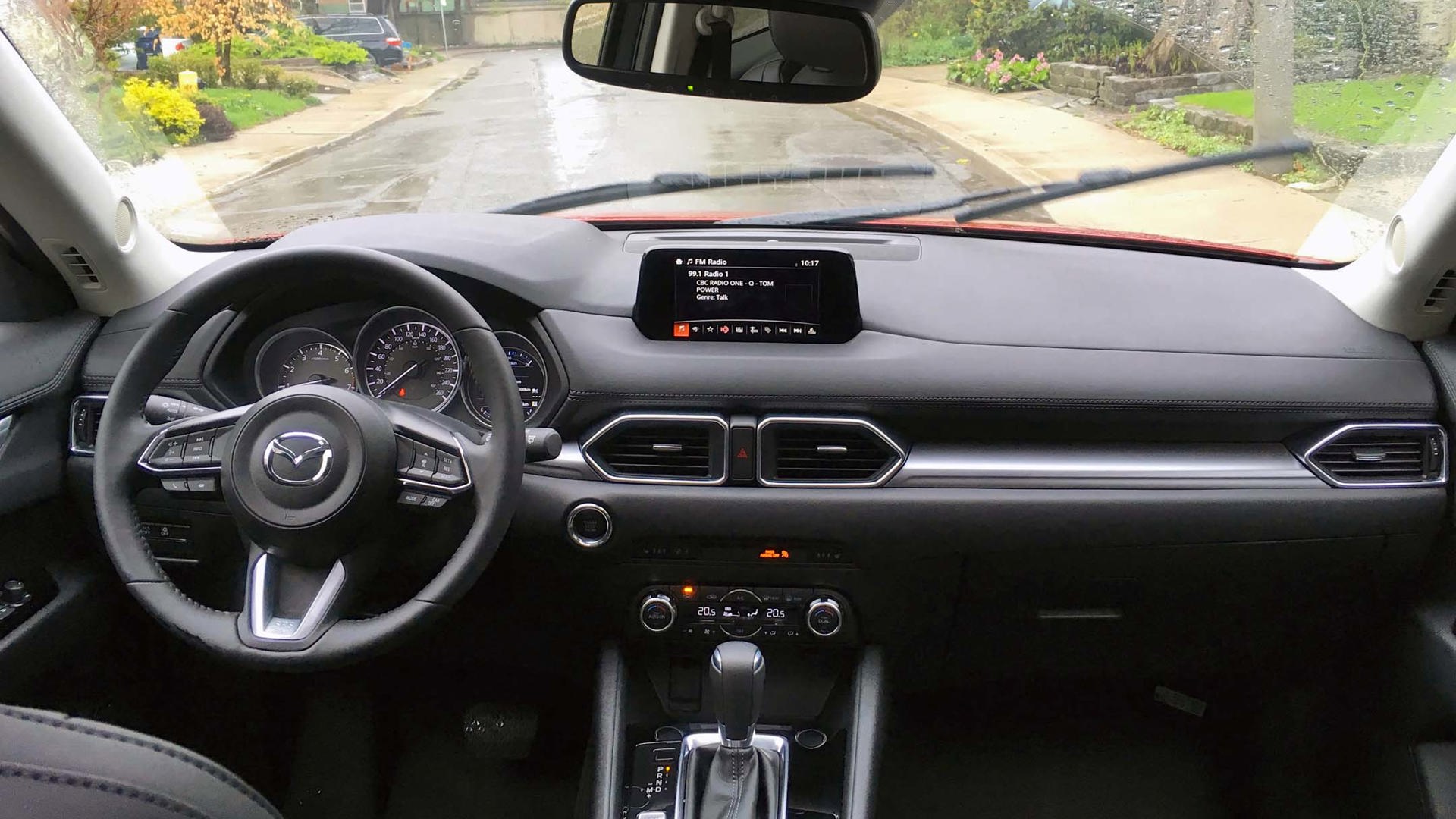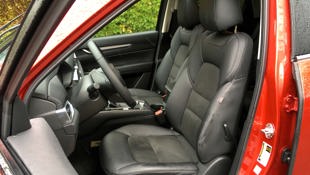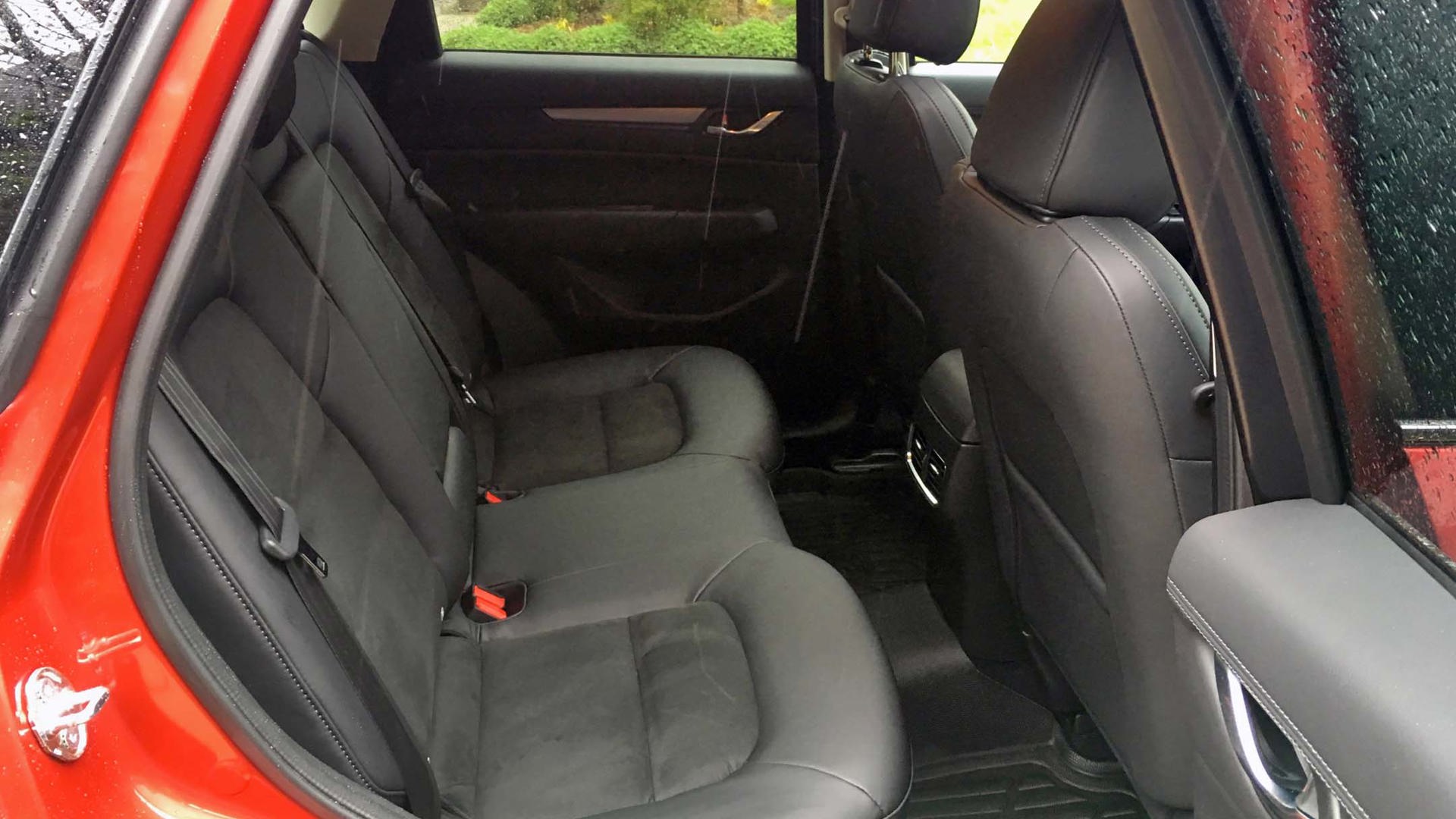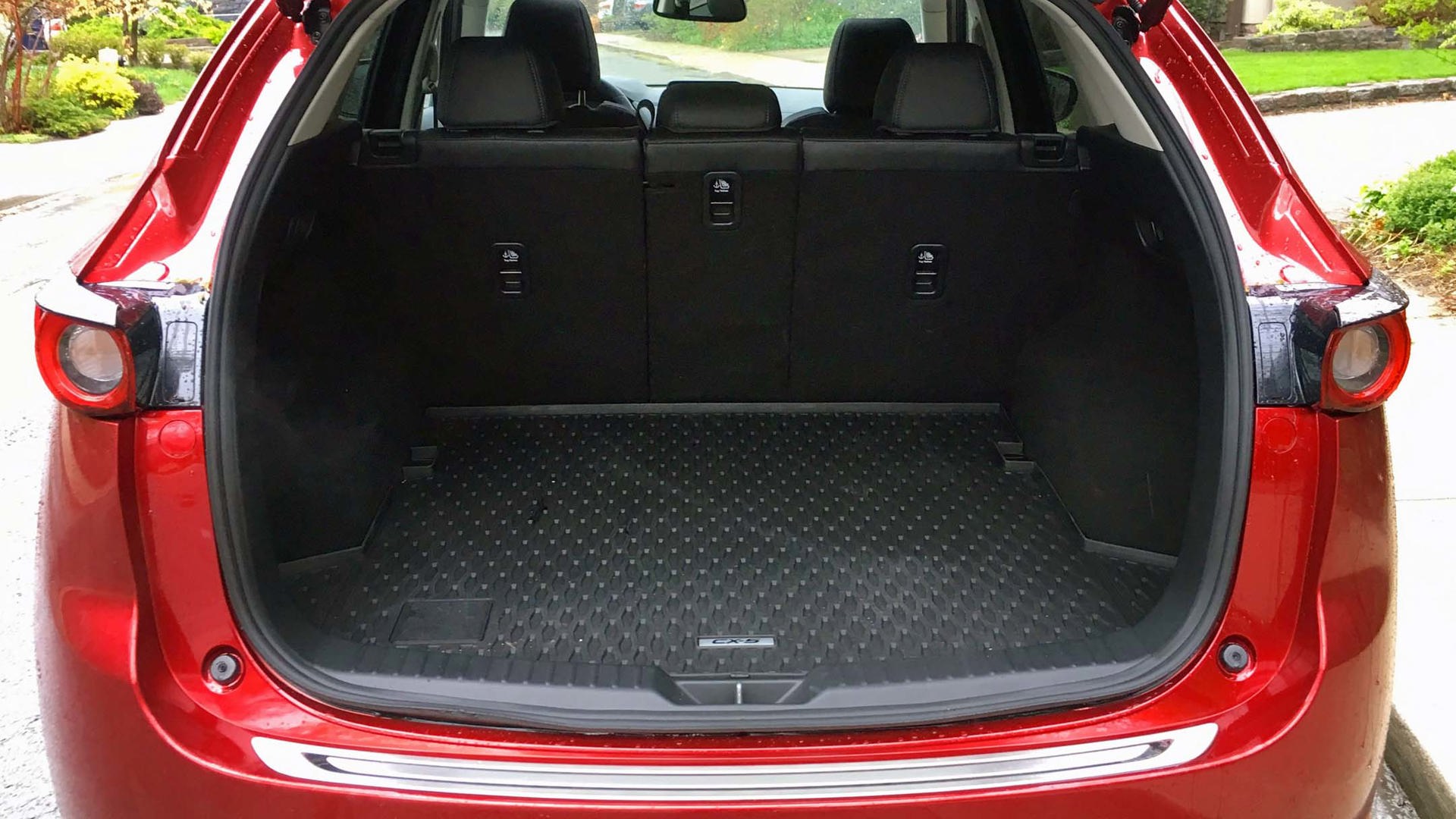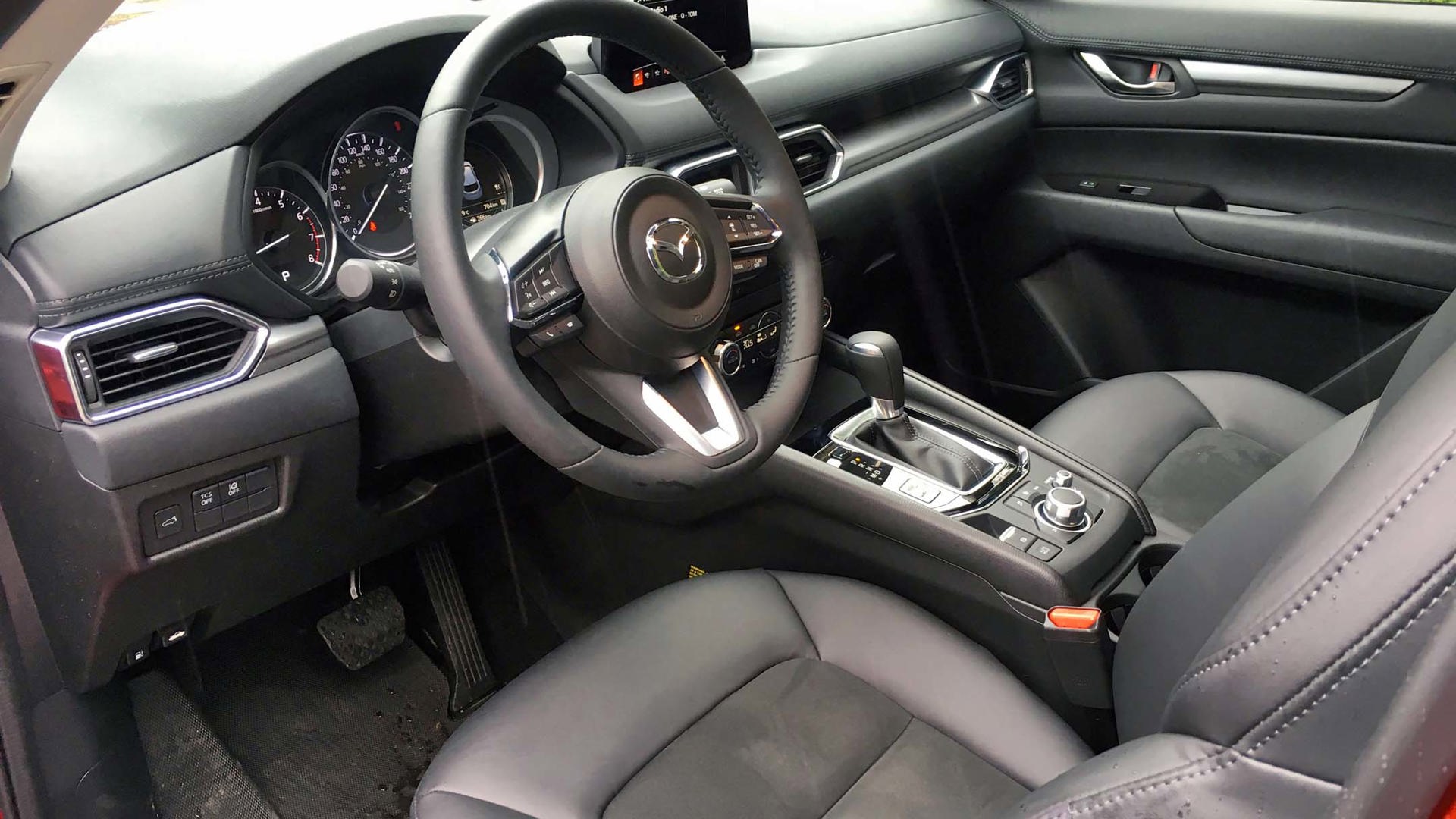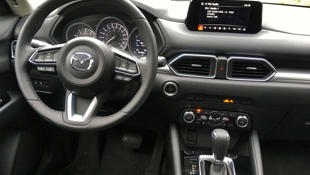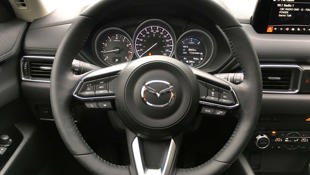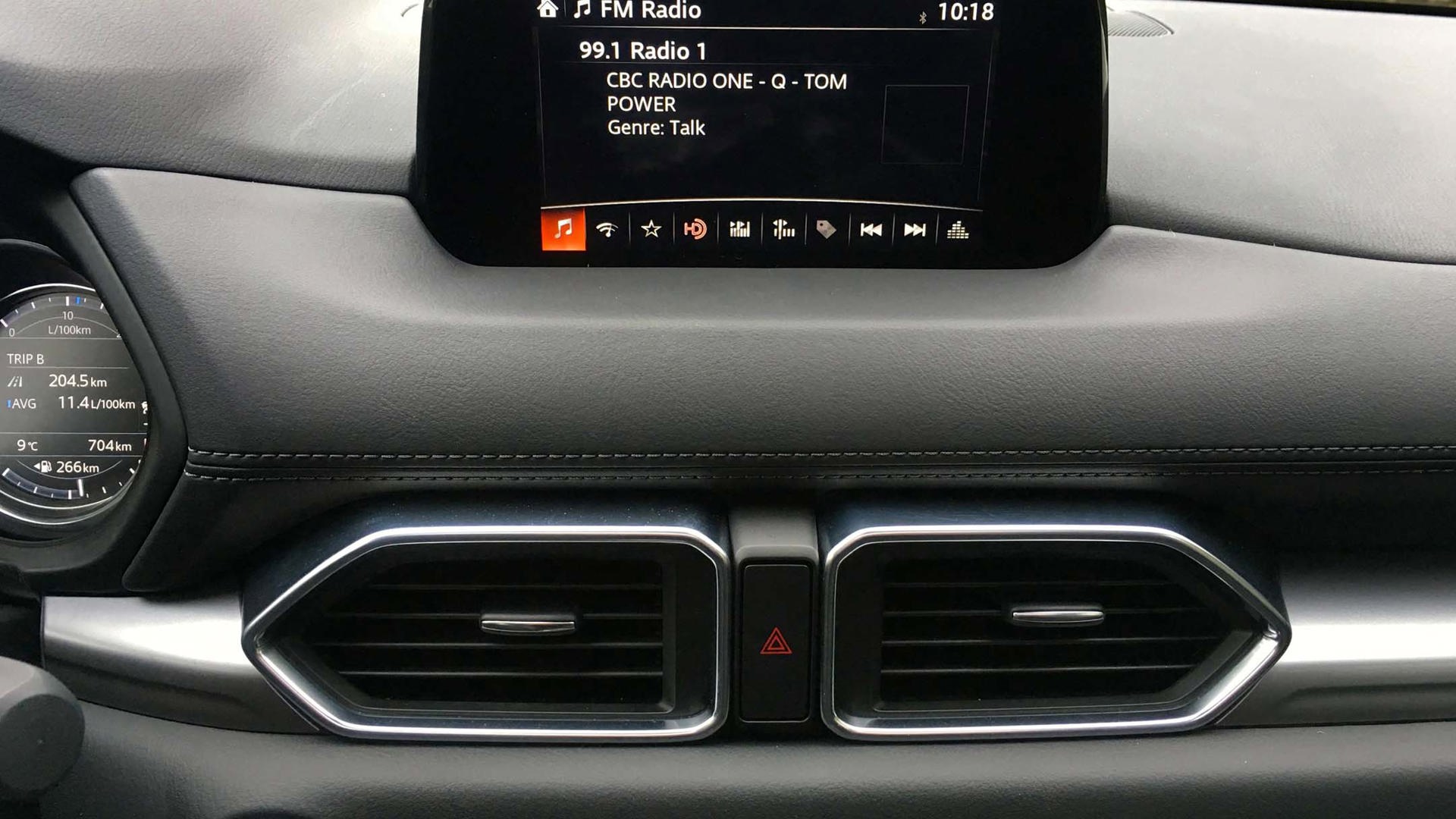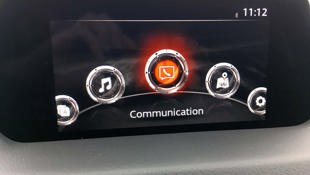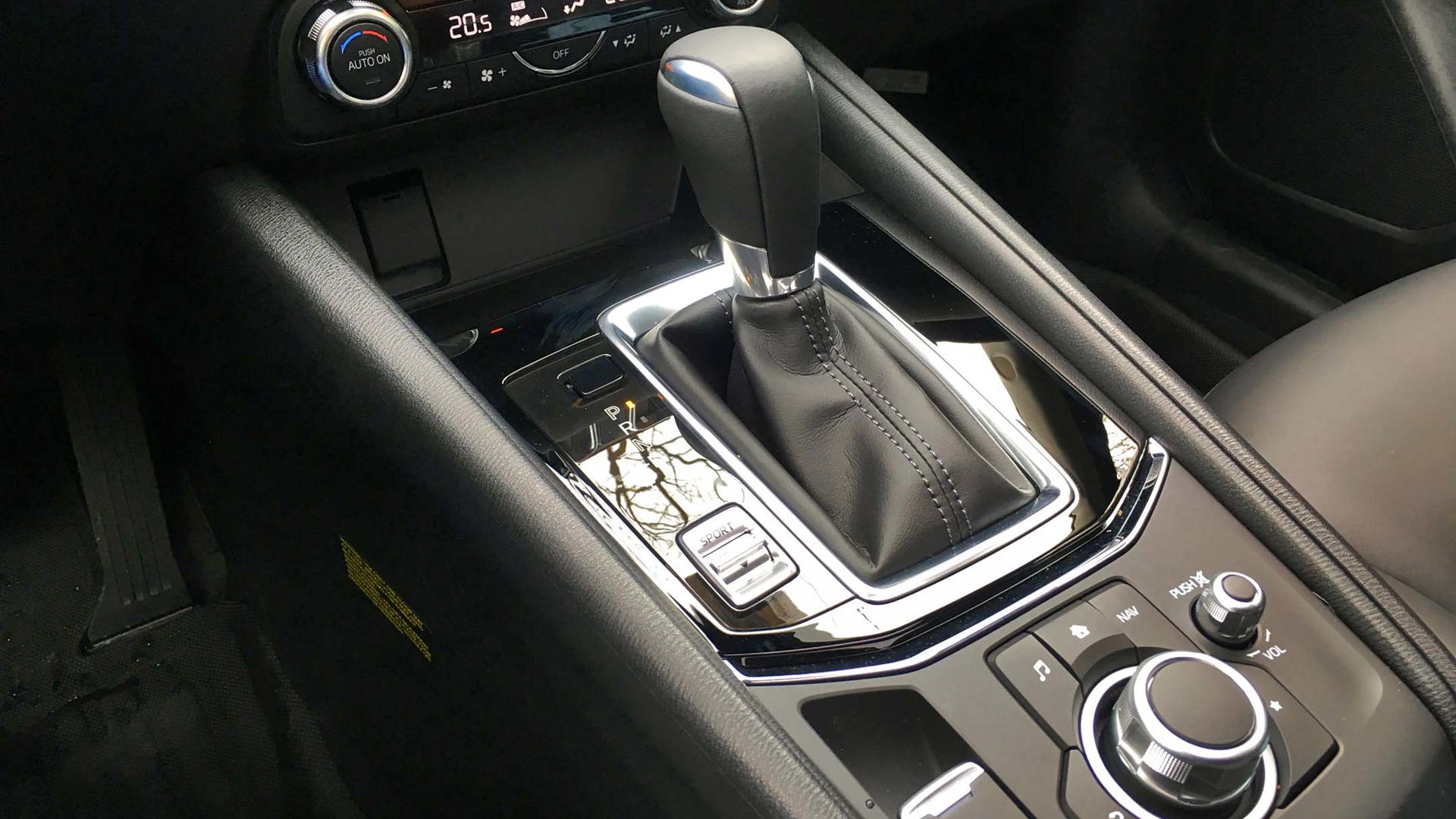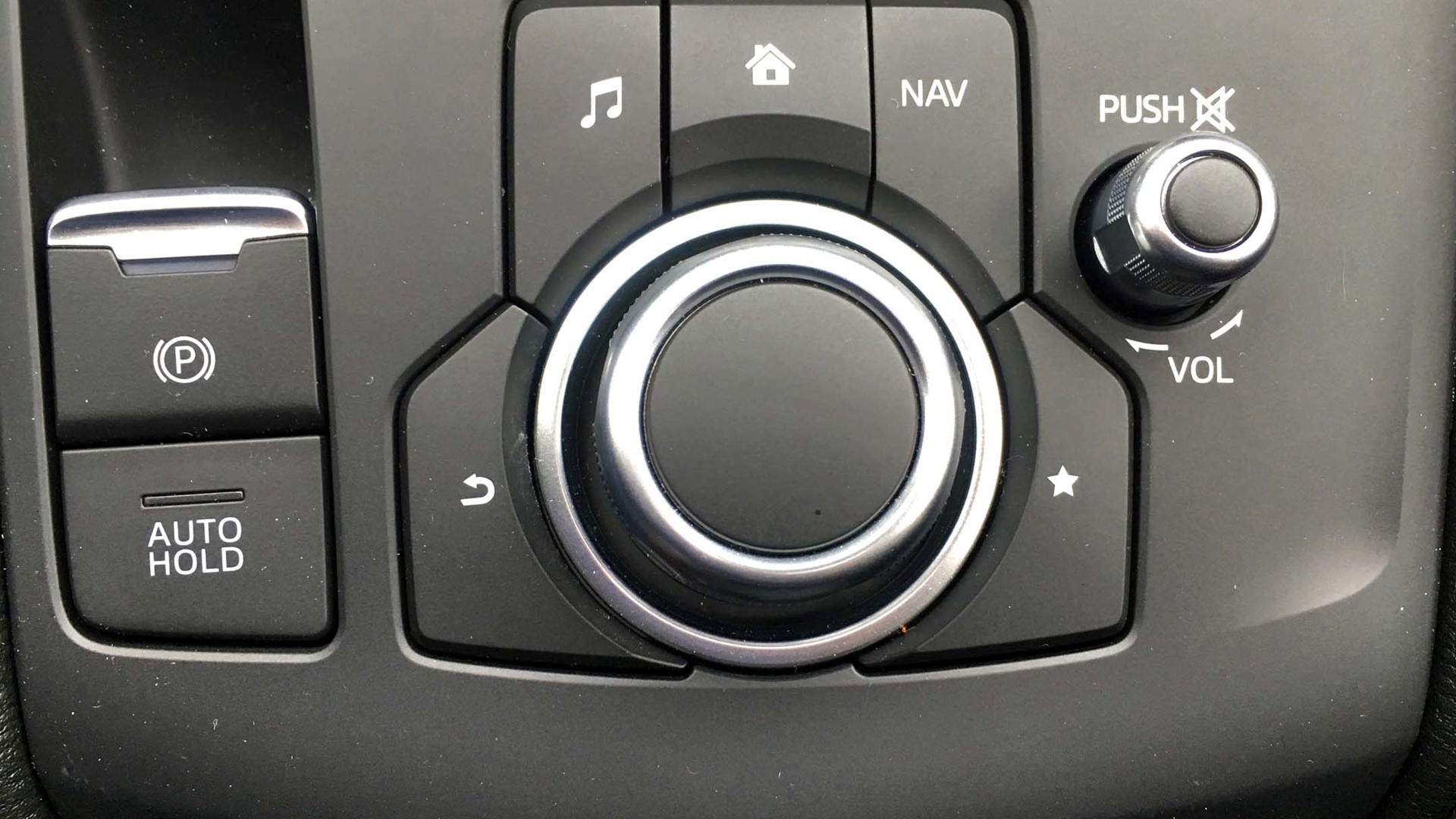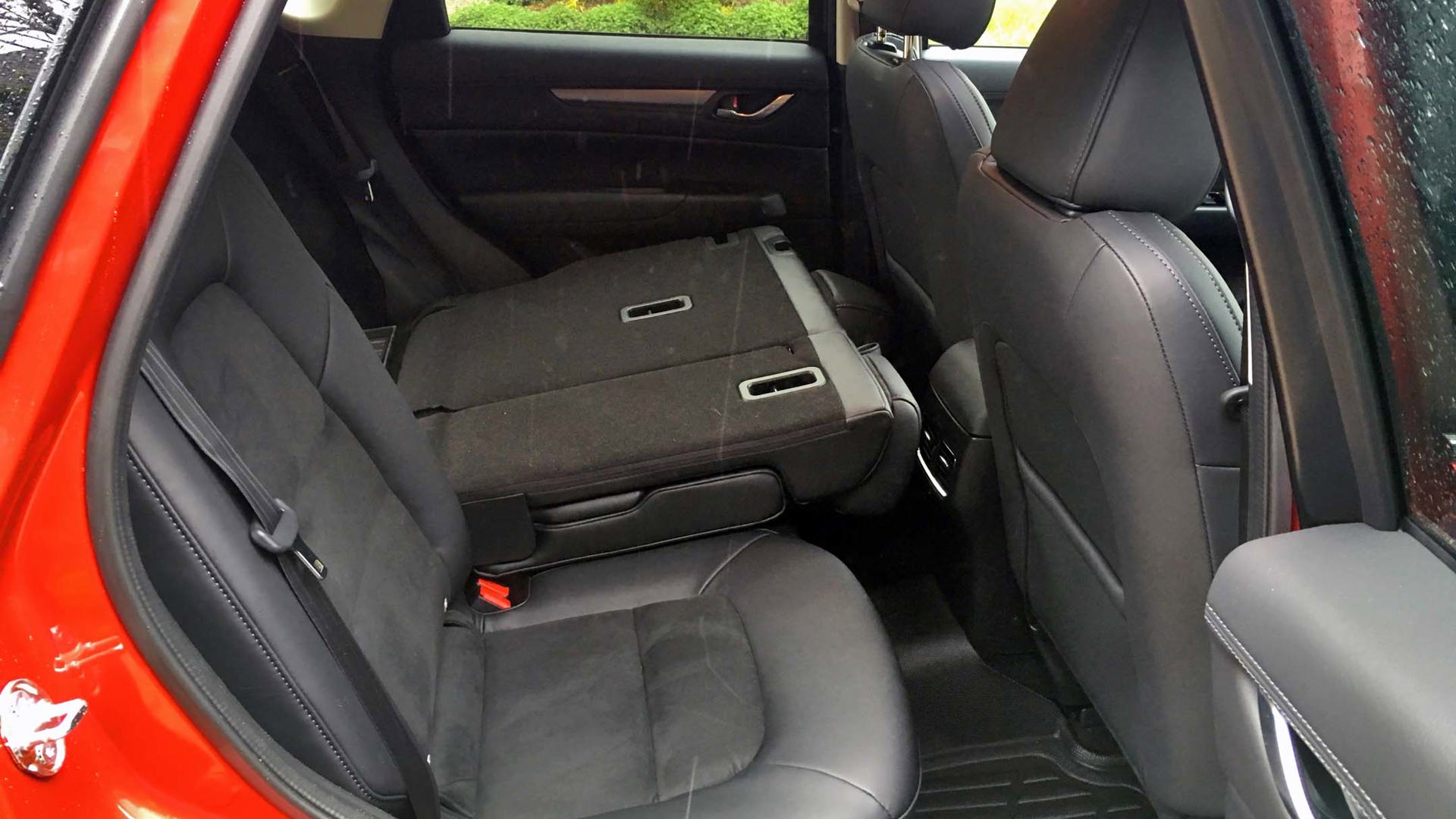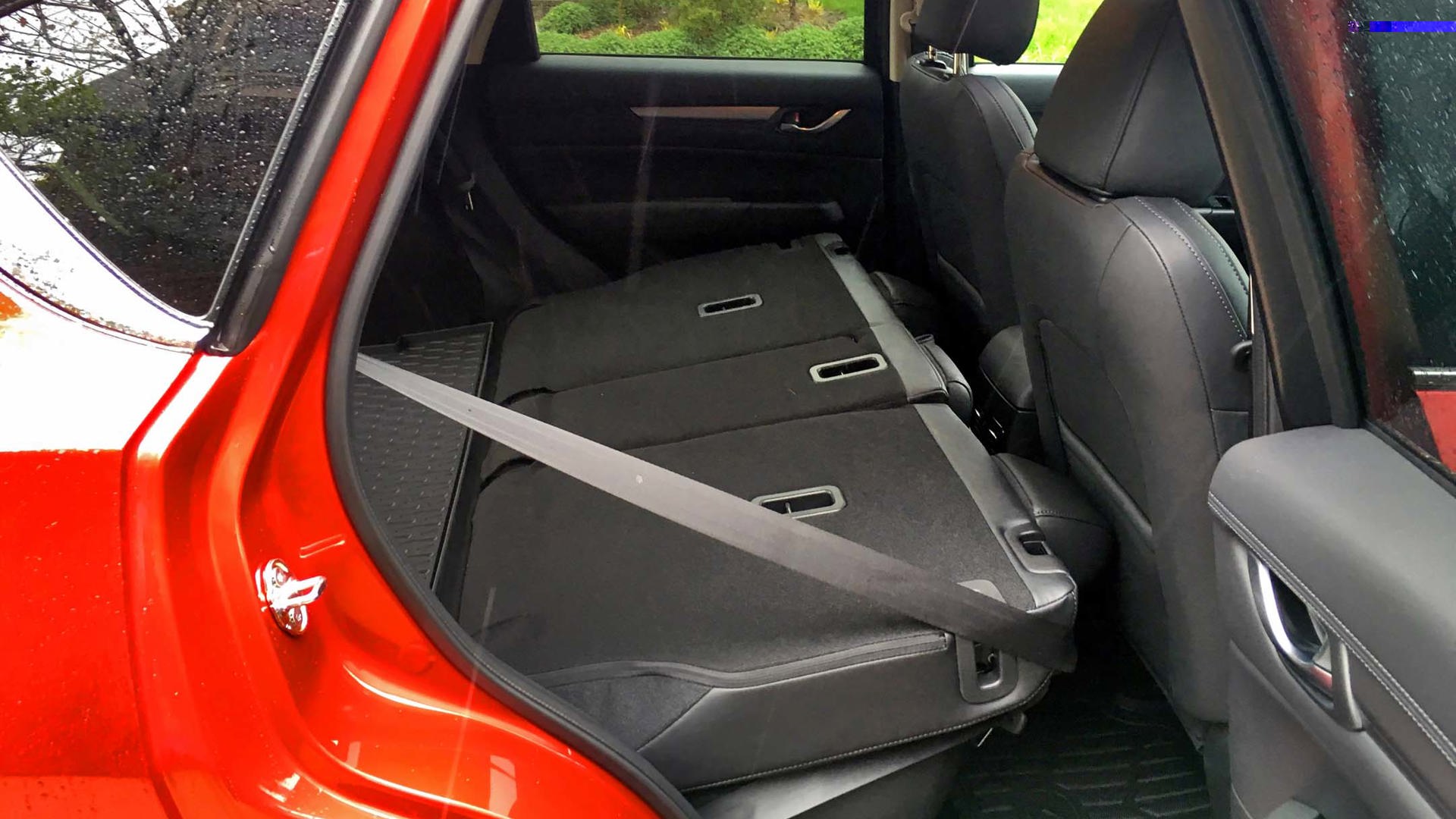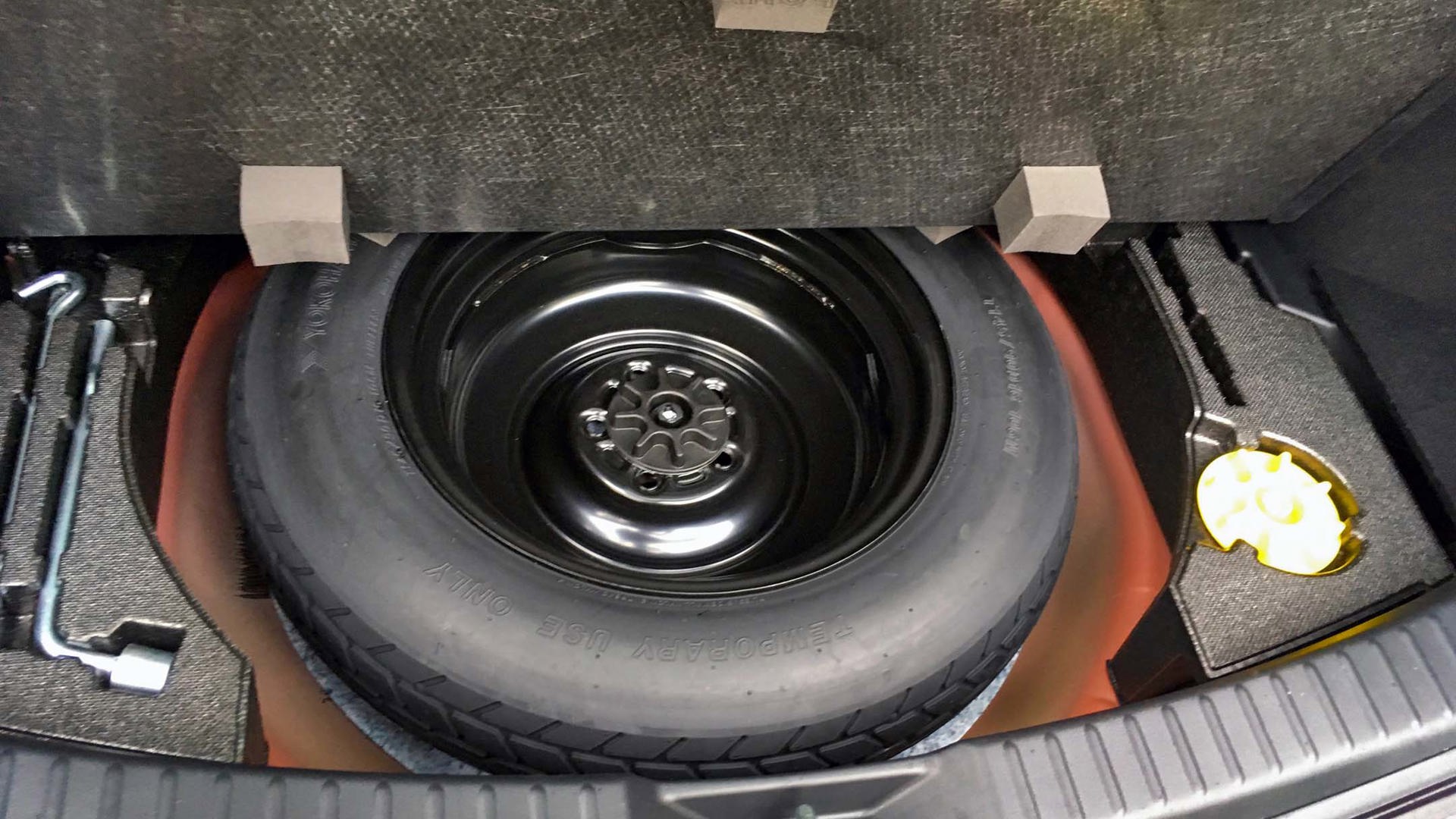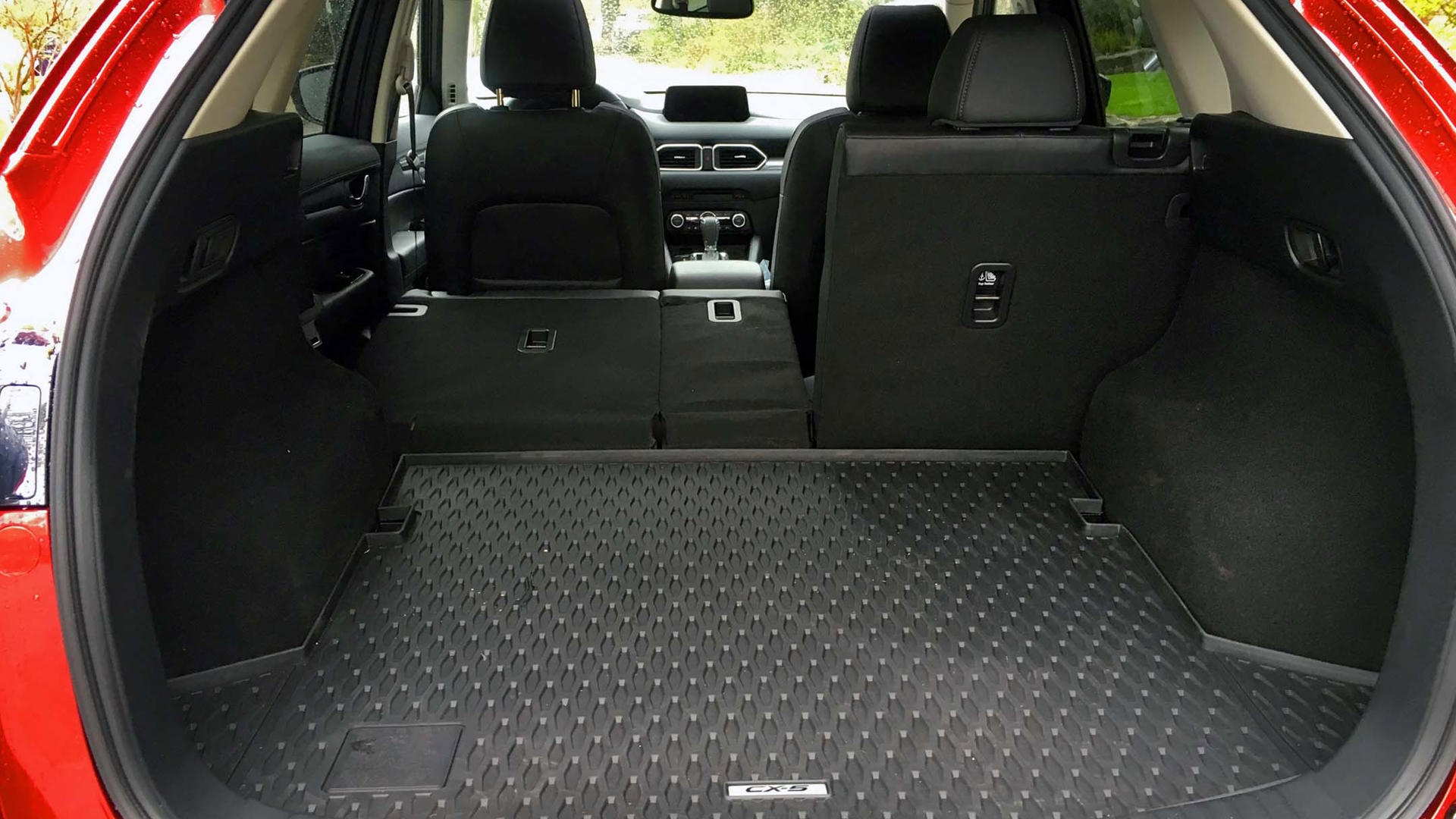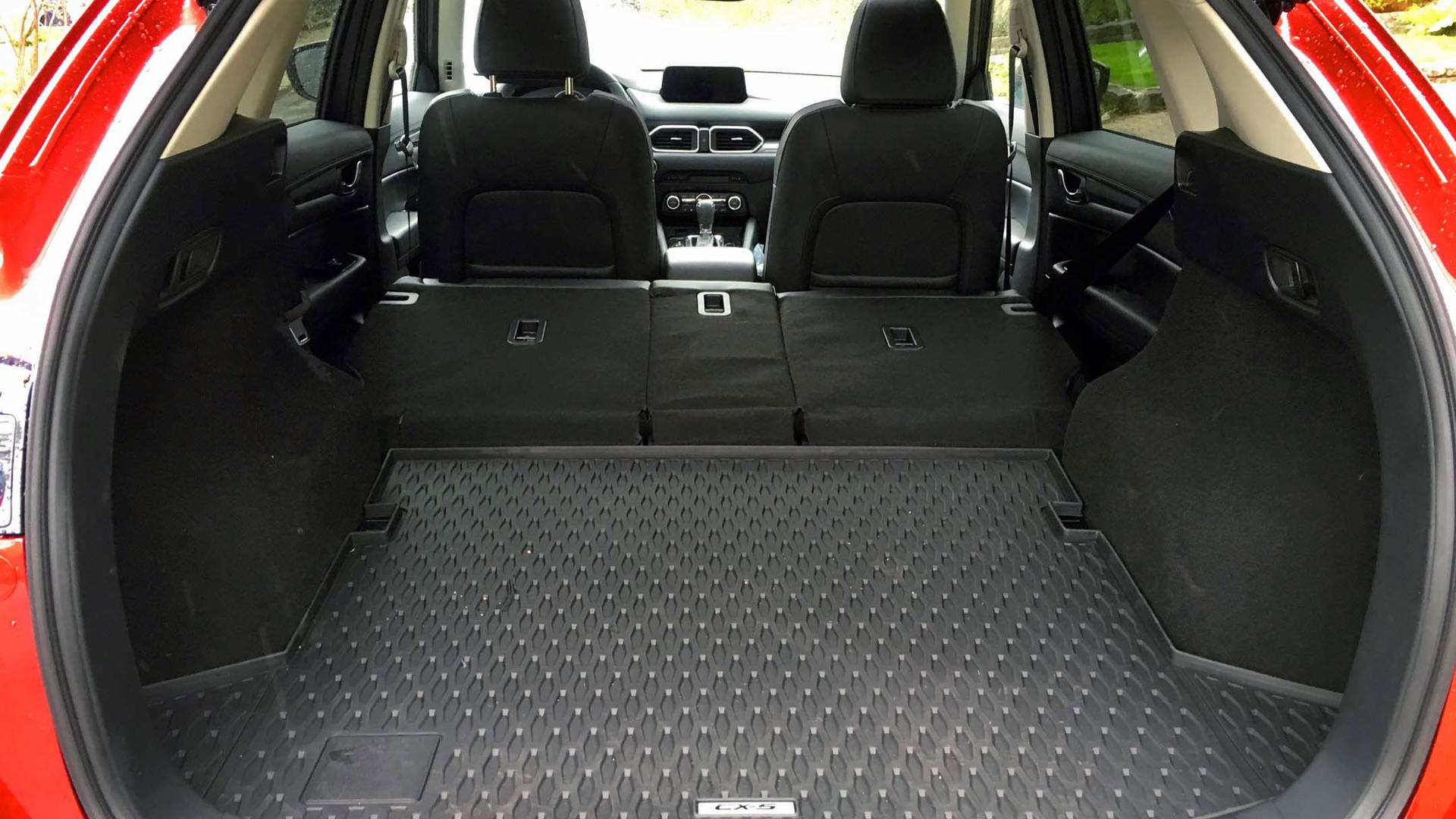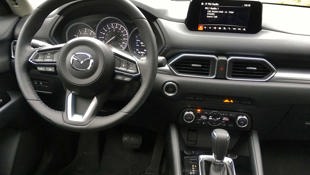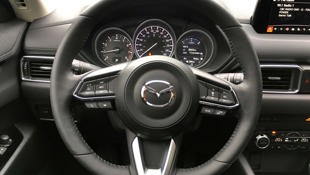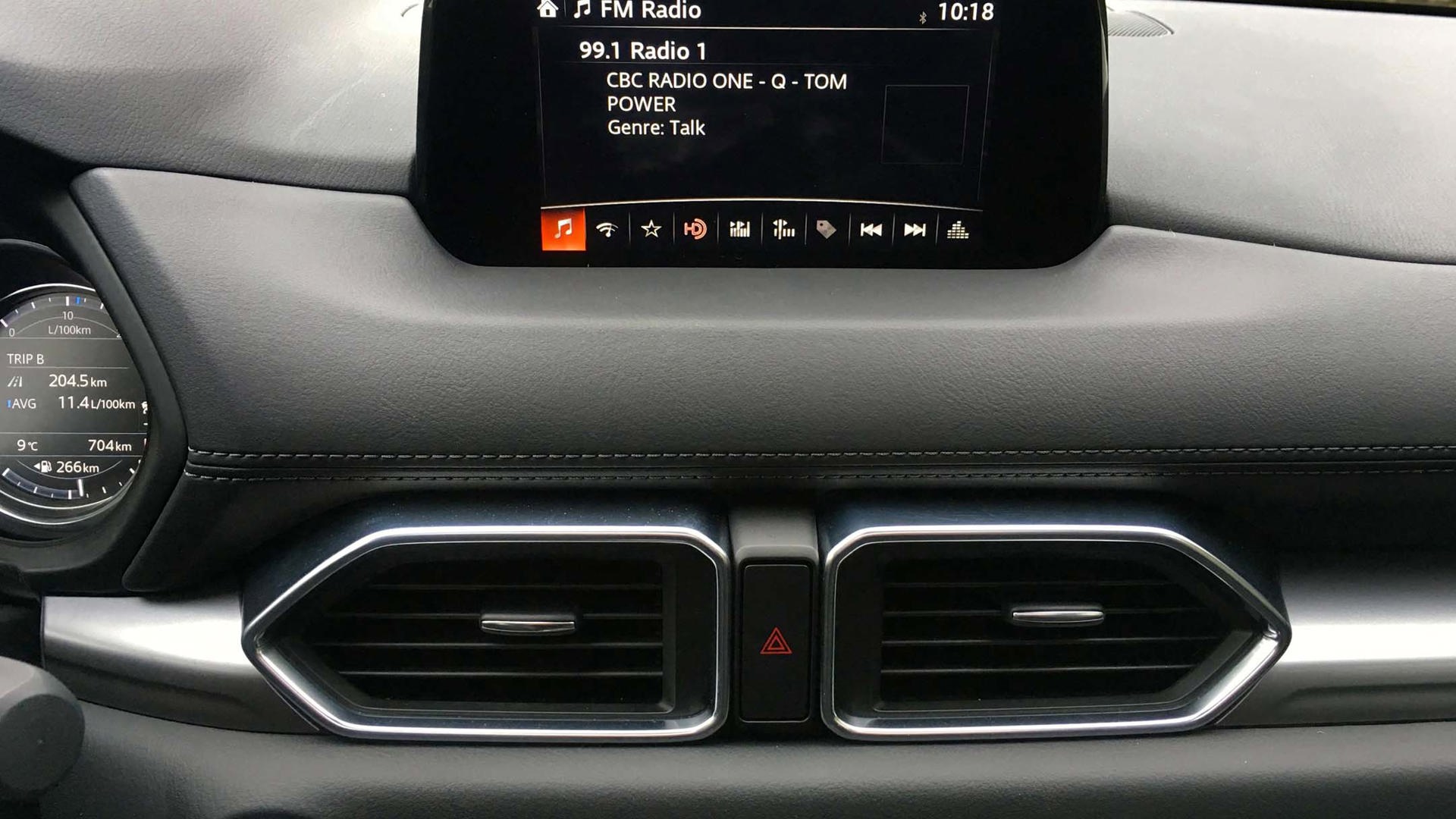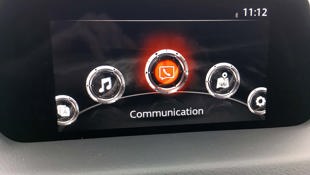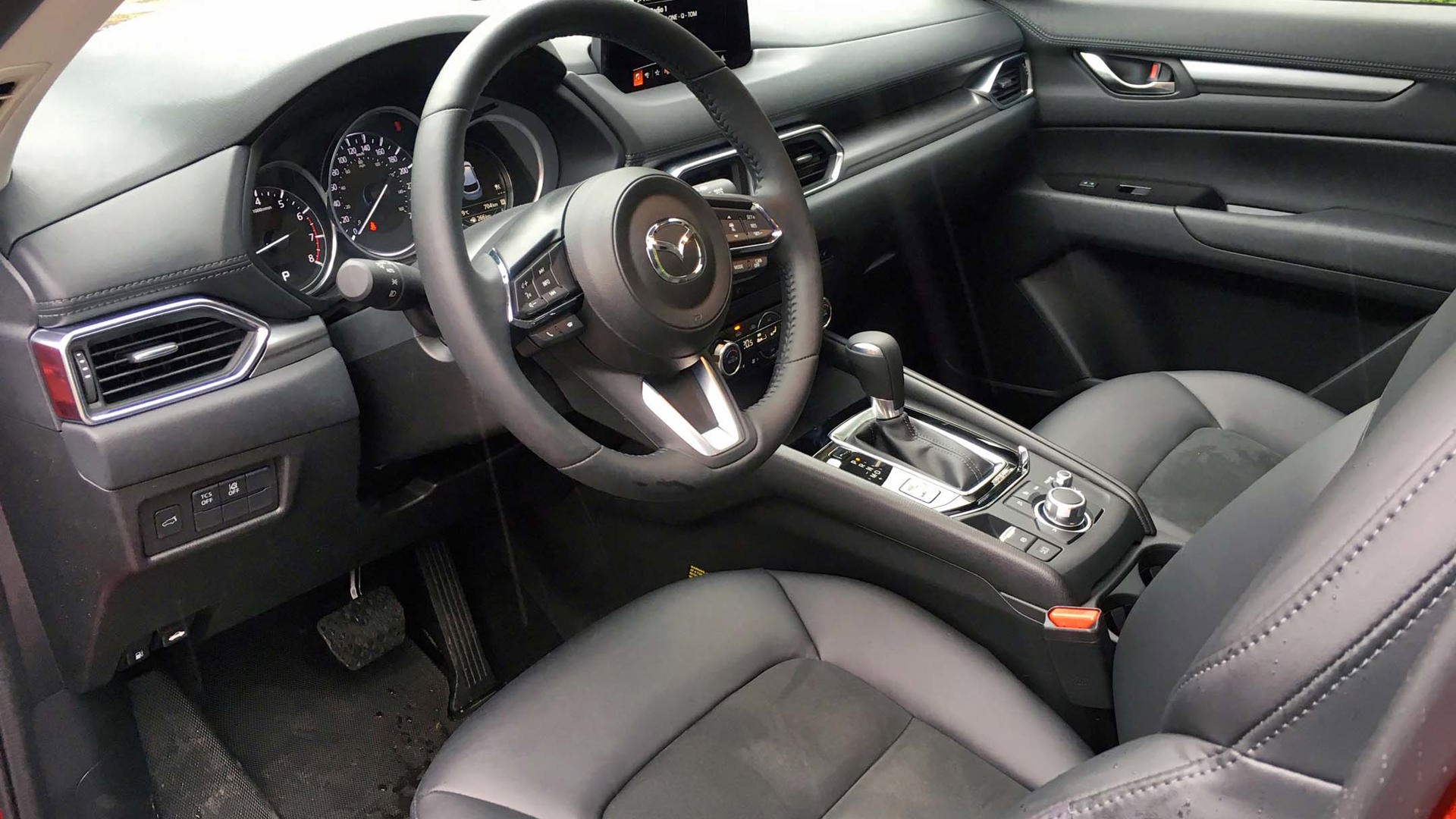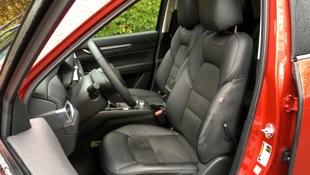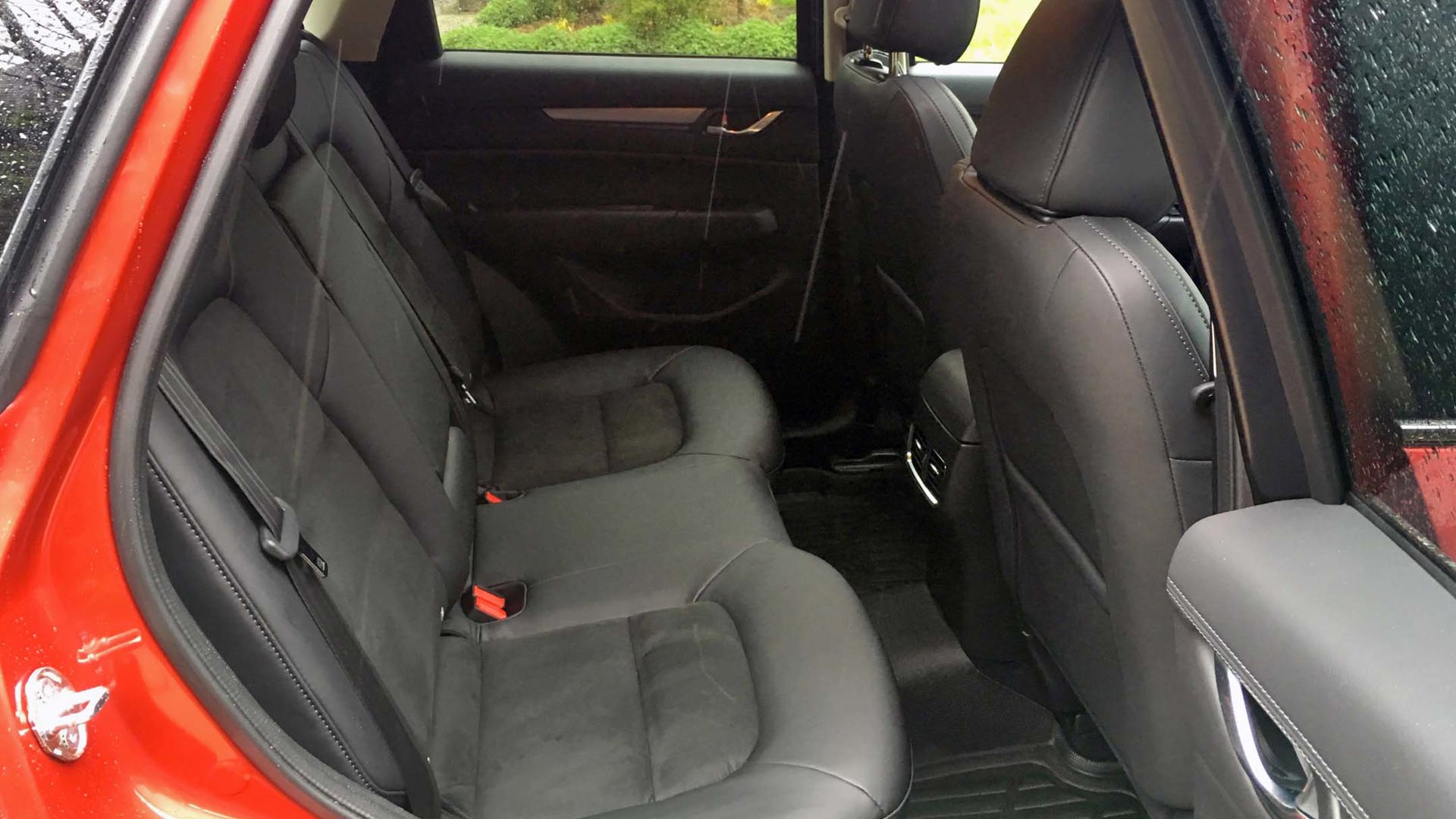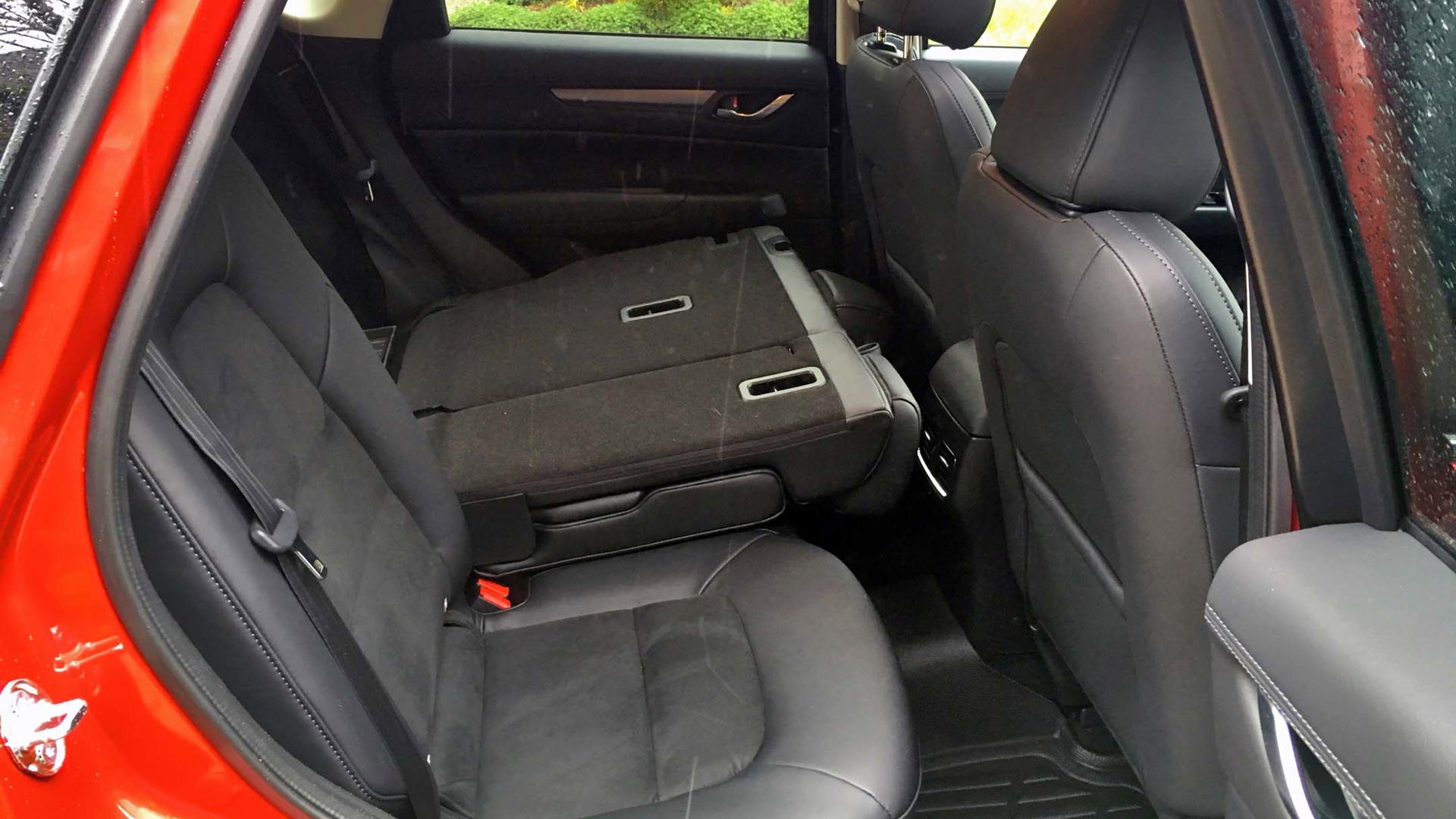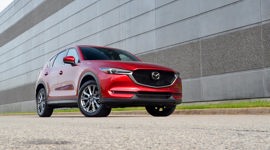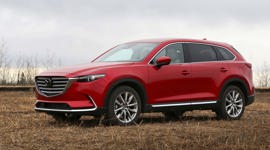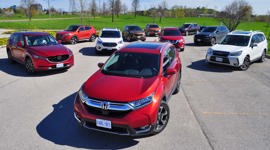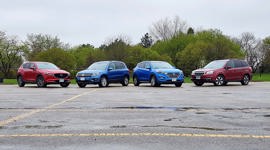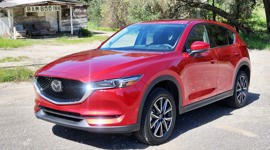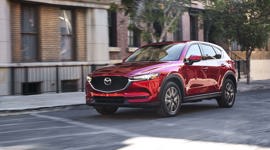 AutoTrader SCORE
AutoTrader SCORE
-
STYLING9/10
-
Safety8/10
-
PRACTICALITY8/10
-
USER-FRIENDLINESS8/10
-
FEATURES9/10
-
POWER8/10
-
COMFORT8/10
-
DRIVING FEEL7/10
-
FUEL ECONOMY8/10
-
VALUE8/10
The 2017 Mazda CX-5 belongs on the wish list of buyers with a lot of boxes to check off – which is pretty much all SUV owners. Do you like the actual experience of driving? Check! Want to know your family’s cossetted amid abundant safety features? Check! Envy-provoking comforts without busting the bank? It’s practically a spa on wheels. Looks? For an SUV, yes, check! Cargo space? Well, kinda.
In a room full of awkward teenage boys in ill-fitting clothes, it’s a veritable stylish Adonis.
The GS is the CX-5’s mid-level trim, but this GS tester included three significant options. They bumped up the price, the ride and passenger experience significantly but it still totaled just over $35k. If you’re short on time, those are the headlines. The rest, below, are important details and flagrant opinion.
It drives beautifully – though there’s always room for improvement.
The CX-5 features a pleasantly stiff suspension, front and rear, and handling that almost makes you want to move your home to an S-bend. A generous wheelbase – that space between the front and back wheels – encourages stability and legroom.
It’s a front-engine all-wheel drive (AWD – a $2,000 extra and expensive drop in fuel economy) which employs active torque split. Meaning? From standing still, it delivers 100 percent torque to the front wheels. But on the road, it continually monitors conditions and, when needed, instantly and automatically splits the torque between wheels, making the option as much a safety feature as an element of a spirited drive.
For such a large vehicle, the CX-5 could benefit from more power. An efficient but diminutive four-cylinder engine achieves 187 hp at 6,000 rpm and 185 ft-lb of torque at 4,000 (and a towing capacity of 2,000 lb) guided by a six-speed automatic transmission. You can switch to manual-shift mode but it’s not as enjoyable as paddling. It seems odd that a car so crafted to satisfy the driver would buck paddle shifters, which would only enhance the extra thrills the CX-5 provides in sport mode.
The rack-and-pinion steering delivers excellent feedback from the road. The computer senses your speed and loosens the steering when you’re moving slowly. That means less fatigue in your arms and shoulders on those already stressful crosstown commutes. But at highway speeds, where the risk of serious injury or death in the event of a collision is exponential, you have laser control. This seems like a time to talk more about safety.
Safety features? This category is a battle to the death. (Sorry, bad analogy.)
The point is you’ll be well equipped with pretty much any purchase you make in the mid-range SUV market. So your best move is to know a bit about the features and decide which make you feel most confident. Long story short: The CX-5 will not disappoint.
The GS, starting at $29,100 before taxes, freight or options, comes with some good standards. The wide-angle rear-view camera combined with the rear cross-traffic alert will likely never save your life, but could well save a pedestrian’s – and will definitely save you from a few dents and scratches in parking lots, garage and lanes. Also included, traction control and dynamic stability control are sneered at as nanny controls by people like me who like to turn them off – but the week I drove this car, the skies rained down God’s vengeance as you’ll note in some of the photos. Smarter people know better and leave the sideways sliding to the pros.
The advanced blind spot-monitoring and smart city brake support are useful for busy modern drivers squeezed into constantly evolving traffic. (However, they are to be used just as named: monitoring and support. Please continue checking over your shoulder and watching where you’re going.)
Night driving is something that begins to take on greater risk as you age. Auto-levelling headlights find their right position on angles. So if you load the trunk down with cinder blocks, you’re not blinding oncoming drivers. Incidentally, “blinding” is not much of an exaggeration. LEDs produce such solar brightness that cities who employ them for streetlights are experiencing angry uprisings from citizens who can’t sleep at night. Meanwhile, an auto-dimming rear-view mirror darkens the less forgiving headlights of those behind you.
Remember the above are all standards. This tester came with the i-ACTIVSENSE Package, a $1,600 upgrade that nudges you that much closer to the experience of autonomous driving. Consider: radar cruise control with stop-and-go function plus smart brake support, a distance-recognition system, forward obstruction warning, lane-departure warning, lane-keep assist system – and even a traffic-sign-recognition system. That’s a lot of built-in control. All it needs is a Nespresso machine.
Meanwhile the high-beam control system uses a minute camera in the windshield to detect oncoming traffic and automatically lowers your beams. (See above regarding LEDs, aging and blindness.)
Lastly, a colour head-up display is projected just above the steering wheel. So your eyes need not drift off for important real-time information about your drive.
Mazda always brings the bling.
The base GS has a heated steering wheel, bless it, and heated front seats. Among other standard goodies, it also bestows a power liftgate (that huge door at the back), leather-ish trimmed upholstery with suede inserts, a leather-wrapped shifter (though plastic paddles would still be better!) and the Homelink wireless garage door opening system. The $1,500 Comfort Package consists of a fairly large moonroof, dual-zone climate controls to satisfy his needs and hers, rear passenger vents and whiz-bang keyless entry tech (proximity and ignition).
The 7.0-inch colour touchscreen, controlled by Mazda Connect, is a source of much debate among enthusiasts. Some people loathe it. However I like its icon-oriented roll-over-and-click interface and find it easy to use.
Anyway you’ll need to try it and decide for yourself whether it works for you.
Same goes for the six-way power driver seat with manual lumbar support (LS). Every back and backside is unique. The makeup of one seat may not be ideal for your shape, but generally, firm is good if you drive a lot. I like this one. The positioning of those “knuckles” buried within the seat back, which the LS dials manipulate, is perfect. They dig directly into my warped L4 and 5 vertebrae. So, between that and the firm suspension, bumps and potholes are a delicious massage.
On the other hand, a friend recently observed the CX-5’s “driver’s seat height adjustment hinges from the front, so in [a] higher position the angle is all wrong.” It’s something I would not have thought of at first, preferring to drive with the seat in its lowest position – especially in SUVs. Another good segue point.
Prettier than your average bear.
To me, all SUVs look awkward and ungainly – like bears on bicycles or teenage boys forced to wear last year’s gym uniform by a frugal mother. It’s a consequence of all those boxes they’re ticking. We want them to be a mobile office, kitchen and rec room.
Some SUVs, like the Nissan Cube and Kia Soul, embrace and even celebrate this ungainliness – and kudos to them. Others, like the CX-5, do their best with what the good Lord gave them. So it’s relatively beautiful. In a room full of awkward teenage boys in ill-fitting clothes, it’s a veritable stylish Adonis. The sculpted nose and aforementioned long wheelbase really help. But when others gush of its (and competitors’) purportedly genuine and un-bell-curved beauty, I feel like that gob-smacked kid staring in disbelief at the emperor’s gitch.
Inside, however, where how the car feels trumps by far how it looks, the CX-5 is gorgeous, well-appointed and intelligently laid out, the cockpit inviting. It looks more expensive than it is.
And lastly, the elephant in your lap – it’s so-so on cargo space.
In recent comparisons of a) four SUVs priced $30–$35K and b) nine SUVs from $35–$40K, only the VW Tiguan had less volume than the CX-5s. Totaling a little over $35K with options, this GS tester falls neatly in the middle of all that. The lesson? If you’re ticking boxes, pack them neatly first.
Mind, the CX-5 was also the only SUV in either comparison to offer 40/20/40 seating, standard with every trim. So at least you can parse that space carefully.
| Engine Displacement | 2.5L |
|---|---|
| Engine Cylinders | I4 |
| Peak Horsepower | 187 hp @ 6,000 rpm |
| Peak Torque | 185 lb-ft @ 4,000 rpm |
| Fuel Economy | 10.2/8.3/9.2 L/100 km city/hwy/cmb |
| Cargo Space | 875 L/1,687 L seats down |
| Model Tested | 2017 Mazda CX-5 GS AWD |
| Base Price | $31,100 |
| A/C Tax | $100 |
| Destination Fee | $1,895 |
| Price as Tested | $35,945 |
|
Optional Equipment
$2,850 – Soul Red Crystal Metallic Paint $450, Comfort Package (power moonroof, automatic dual-zone climate control, rear passenger vents, keyless entry) $1,500, i-Activsense Package (req. Comfort Package, radar cruise control w/ Stop & Go, smart brake support, distance-recognition support system, forward obstruction warning, land-departure warning, lane-keep assist, high-beam control, colour instrument cluster display) $900
|
|
